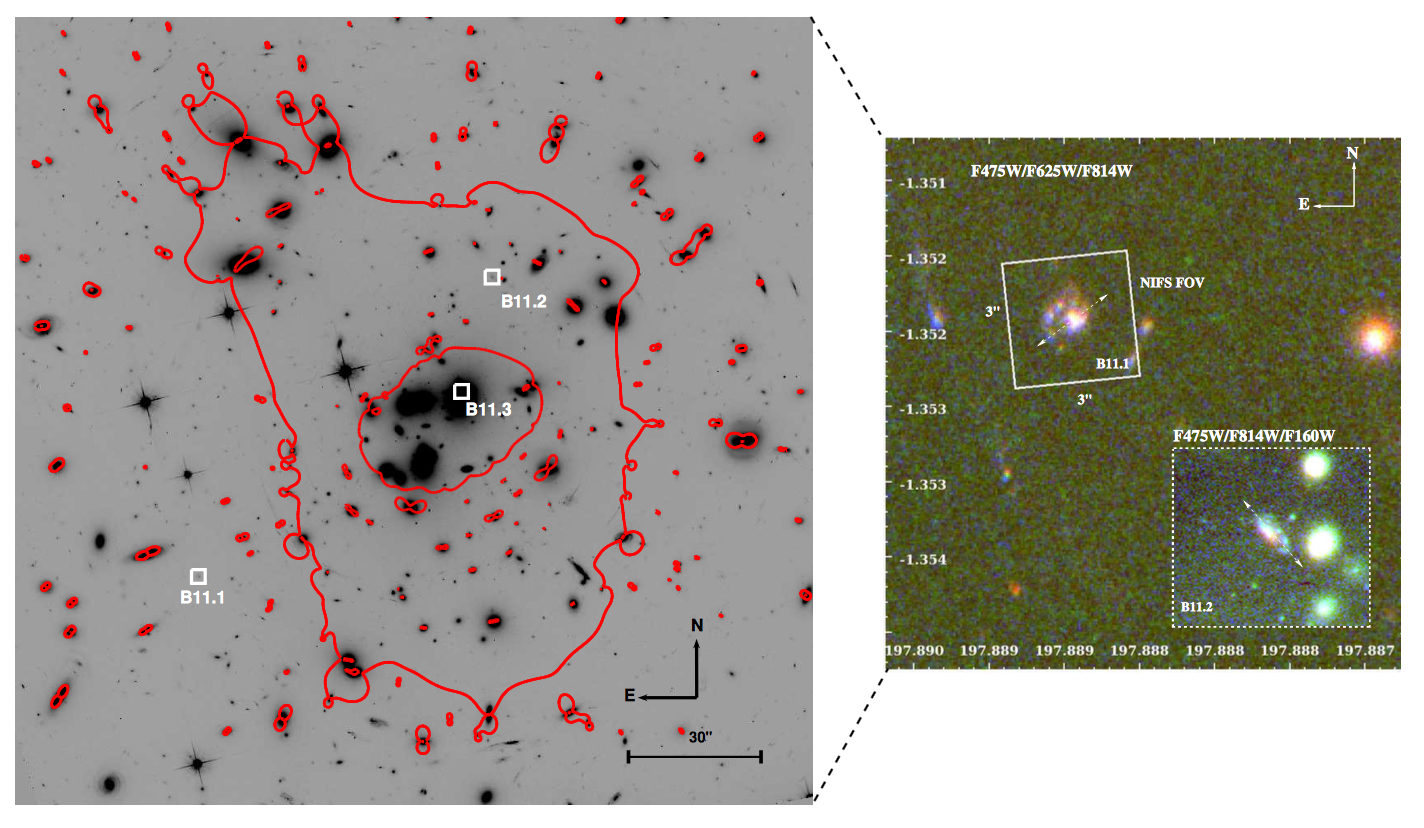Galaxies didn’t always take on the beautiful spiral shape we’ve come to associate with Andromeda and our own Milky Way. Looking far away into deep space – and into the past – ancient galaxies mostly look like giant blobs. But thanks to gravity’s light-bending properties, scientists have spotted a confounding thing in the distance: What appears to be the oldest spiral yet.
Image: Yuan et al, ApJ (2017)
There’s still debate as to the exact conditions required to form spiral arms, and whether they’re permanent or temporary galactic features. But, if truly a spiral, then this newly-discovered galaxy could help scientists understand when, how and why spiral arms form.
“Detailed observations of spiral galaxies at high redshift,” such as this new bad boy, “will enable meaningful investigations into these physical processes that remain elusive in simulations,” the authors write in the paper published in the Astrophysical Journal.
Gravity confers a massive benefit to astronomers hoping to study the most distant reaches of the universe: It bends the shape of space, and therefore bends the path of light travelling past the largest clusters. This is similar to how a magnifying glass works, but using galaxies and spacetime instead of glass.
The international team of scientists found two magnified images of the galaxy, called A1689B11, in two different points of the sky around their magnifying glass, a cluster of galaxies called Abell 1689. They followed the initial discovery with a year of measurements using the Hawaiian Gemini North telescope’s “Near-infrared Integral-Field Spectrograph” tool. This tool could help resolve the velocity of the gases in the distant spinning blob.

B11.3 is the actual galaxy’s location in the sky, unmagnified, behind Abell 1689. B11.1 and B11.2 are the two magnified images appearing on either side of the cluster, magnified in the right panel. (Image: Yuan et al, ApJ (2017))
The measurements revealed a disk-shaped galaxy spinning towards Earth on one side and away from Earth on the other, as well as a spiral arm, 2.6 billion years after the universe first formed. That’s ancient – today we know the universe is around 14 billion years old.
The image still looked like a blob to me, so I passed it along to other researchers to see what they thought. Asantha Cooray, physics and astronomy professor at the University of California-Irvine agreed in an email that the spiral image alone wasn’t clear and instead could have been merging galaxies. “But in such situations the velocity field would be more complex than [the one] seen in the data…. While [it’s a] bit of a step to then say it’s a spiral galaxy I think its fine given what we know about galaxies.”
David Law, associate astronomer at the Space Telescope Science Institute and part-discoverer of the now-second most ancient spiral galaxy, agreed that the results were suggestive – but “this galaxy seems to have a dispersion more akin to modern-day disk galaxies,” he said in an email. “I look forward to seeing how the results shown here evolve with deeper Keck/OSIRIS observations.” He was happy to see the gravitational lensing technique revealing what might have been otherwise hidden.
Scientists seem to be in agreement that NASA’s new James Webb Space Telescope, scheduled to launch in 2019, will change the game. The paper’s authors write: “[F]uture observations with JWST will greatly increase the sample of these rare galaxies and unveil the earliest onset of spiral arms.”
[ApJ]
